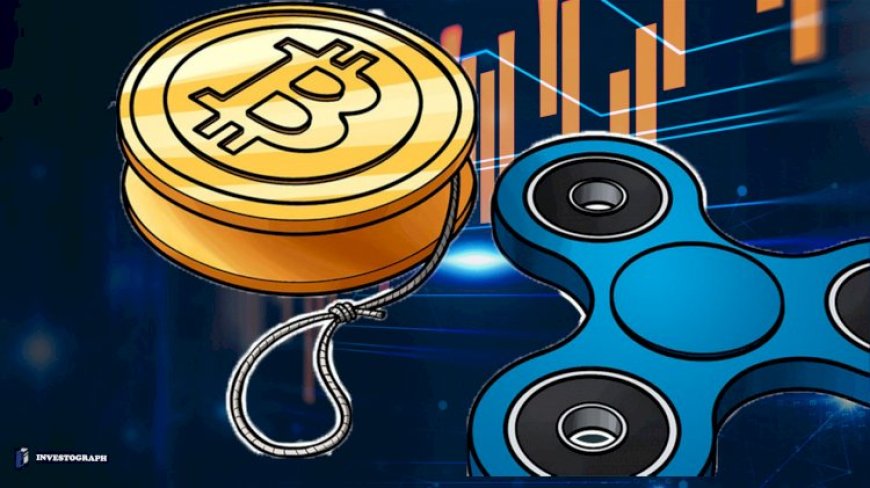The Future of Bitcoin: What Occurs When Every Bitcoin Is Mined?
According to the analysis of certain experts, miners will continue to play a crucial role in the Bitcoin ecosystem, even once all the coins have been mined.

On January 3, 2009, Satoshi Nakamoto mined the genesis block, creating the first 50 Bitcoin (BTC) in history. This event marked the beginning of a billion-dollar industry centered around cryptocurrency mining. However, with a fixed supply of Bitcoin, the future of miners after all coins are issued remains uncertain.
Bitcoin is generated through a process known as mining, involving computer hardware that solves complex mathematical problems and validates transactions on the blockchain network. Miners are rewarded with a predetermined amount of BTC for each block of transactions they process.
According to the Blockchain Council, over 19 million BTC has been awarded to miners in block rewards, and Satoshi Nakamoto's white paper specifies that only 21 million BTC will ever be available. Once this limit is reached, miners will no longer receive rewards for validating transactions.
Nick Hansen, founder and CEO of Bitcoin mining firm Luxor Mining, believes that miners will continue to have a vital role in verifying and recording transactions on the blockchain, even after the loss of block rewards. However, how miners are compensated will evolve. At present, successfully validating a new block rewards miners with 6.25 BTC, valued at approximately $188,381 at the time of writing. Miners also receive transaction fees.
Hansen anticipates that transaction fees will eventually become the primary incentive for miners to continue their work long after the last BTC is mined. This shift, though, is likely to take years, as the last BTC block reward is projected to occur around the year 2140 based on block discovery rates and the halving process, which occurs roughly every four years.
A Bitcoin halving involves a planned reduction in the rewards miners receive, with the next one expected around April 2024. This will reduce the reward for each block to 3.125 BTC. The aim is that by limiting the supply of BTC, its value will increase as demand grows and supply remains fixed.
However, the price of BTC in 2140 will depend on unpredictable factors like market demand, regulatory conditions, technological advancements, and macroeconomic influences. The scarcity created by having all Bitcoin in circulation may contribute to price increases, but it ultimately hinges on market dynamics.
Jaran Mellerud, a research analyst from Hashrate Index, predicts that as Bitcoin adoption and usage expand, transaction fees will significantly rise and become the primary source of revenue for mining firms. By the time the last BTC is issued, the block subsidy will have become minimal, making it less impactful on the coin supply.
Mellerud speculates that, at that point, Bitcoin's value will no longer be measured in fiat currencies, as he believes that fiat money systems will have already collapsed by then. Instead, Bitcoin could become the global standard unit of account, measured in terms of the energy it can purchase, much like how the U.S. dollar's purchasing power is measured in terms of commodities like barrels of oil.
Looking ahead, Pat White, co-founder and CEO of digital asset platform Bitwave, acknowledges that miners will continue to be a crucial part of the ecosystem, although not all will survive due to increasing costs. White suggests that BTC could fundamentally change over the next century, particularly with the advent of quantum computers, which may pose a threat to the current encryption underpinning Bitcoin.
White believes that by 2140, quantum computers could potentially break Bitcoin's core encryption. However, he also points out that engineers are aware of this issue and are working on solutions. This may necessitate a significant reworking of Bitcoin, from its encryption layer upwards, to adapt to quantum security requirements.
Furthermore, White speculates that while Satoshi Nakamoto's white paper establishes a hard cap of 21 million BTC, it might be challenging to enforce this rule by 2140, especially if the community deems transaction fee incentives insufficient for network security. In such a scenario, future miners could theoretically extend the BTC hard cap.
 A large portion of respondents are disillusioned with the global financial system and want change. Source: Morning Consult.
A large portion of respondents are disillusioned with the global financial system and want change. Source: Morning Consult.
The impact of this extension on BTC's price remains uncertain. Nevertheless, White believes that Bitcoin's price will stabilize at a global inflation-reflecting level, with significant price movements occurring in the next 120 years if one or more nations adopt it as their reserve currency.
In such a scenario, it is likely that the price of BTC will be independent of Bitcoin mining schedules, and unforeseeable factors such as wars, energy crises, or advancements in technology could influence Bitcoin's future. Nonetheless, the focus should remain on solving the current challenges, including payments, digital ownership, and financial inclusion.







